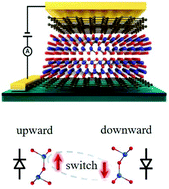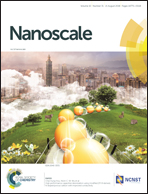Room-temperature ferroelectricity and a switchable diode effect in two-dimensional α-In2Se3 thin layers†
Abstract
Nanoscale room-temperature ferroelectricity is ideal for developing advanced non-volatile high-density memories. However, reaching the thin film limit in conventional ferroelectrics is a long-standing challenge due to the presence of the critical thickness effect. van der Waals materials, thanks to their stable layered structure, saturated interfacial bonding and weak interlayer couplings, are promising for exploring ultra-thin two-dimensional (2D) ferroelectrics and device applications. Here, we demonstrate a switchable room-temperature ferroelectric diode built upon a 2D ferroelectric α-In2Se3 layer as thin as 5 nm in the form of a graphene/α-In2Se3 heterojunction. The intrinsic out-of-plane ferroelectricity of the α-In2Se3 thin layers is evidenced by the observation of reversible spontaneous electric polarization with a relatively low coercive electric field of ∼2 × 105 V cm−1 and a typical ferroelectric domain size of around tens μm2. Owing to the out-of-plane ferroelectricity of the α-In2Se3 layer, the Schottky barrier at the graphene/α-In2Se3 interface can be effectively tuned by switching the electric polarization with an applied voltage, leading to a pronounced switchable double diode effect with an on/off ratio of ∼105. Our results offer a new way for developing novel nanoelectronic devices based on 2D ferroelectrics.



 Please wait while we load your content...
Please wait while we load your content...